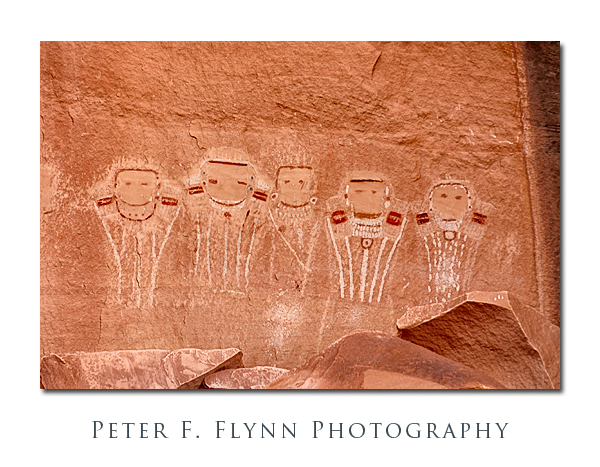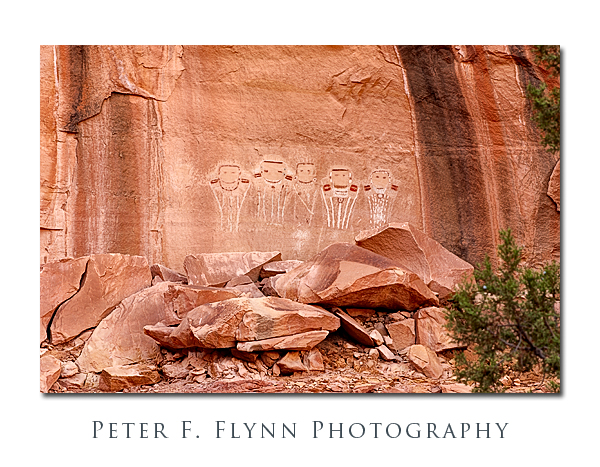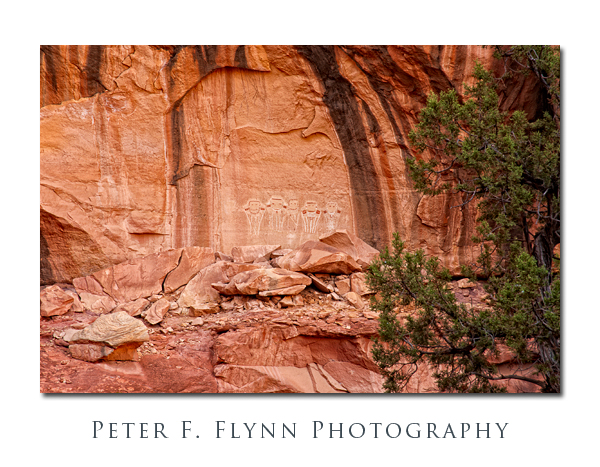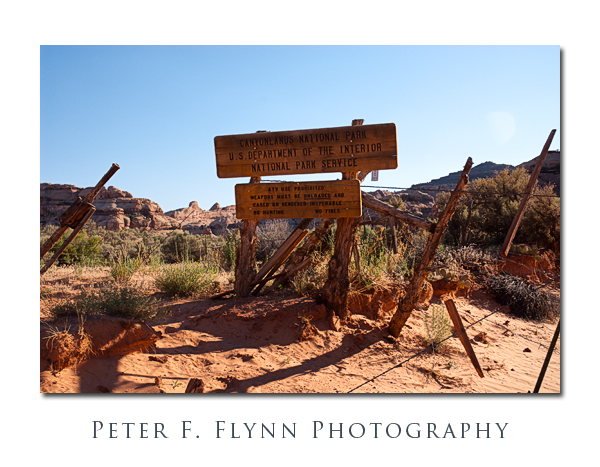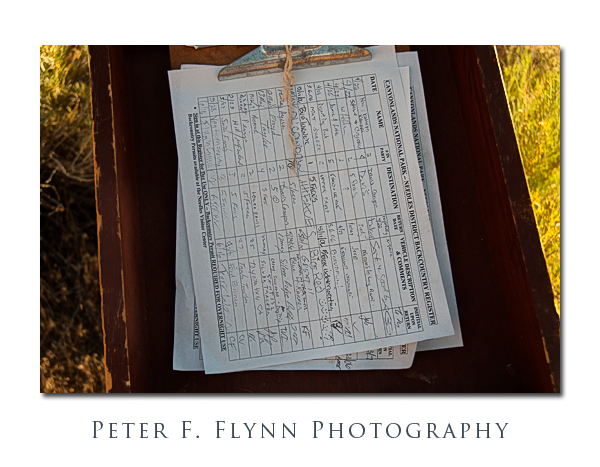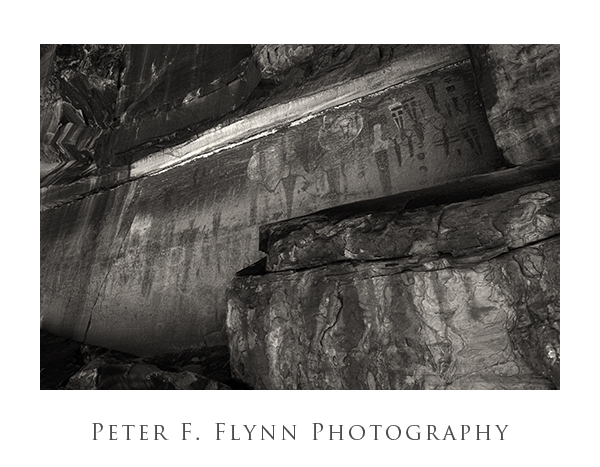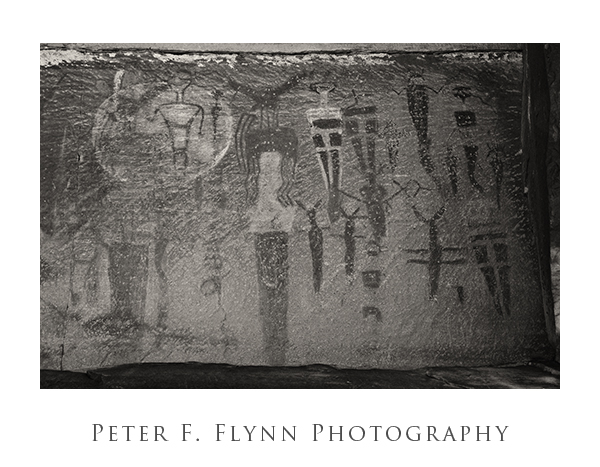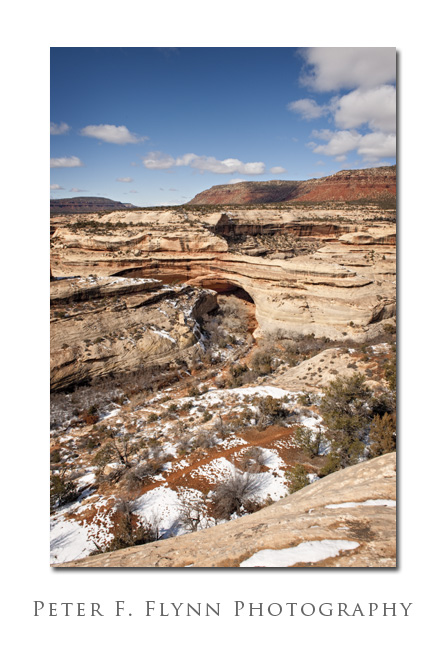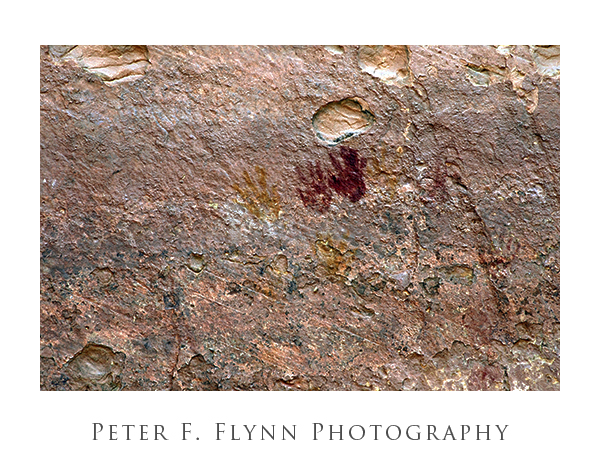Canyonlands National Park is one of our favorite ancient rock art hunting grounds. There are a large number of sites scattered over 527 square miles (!), with the great bulk of the sites accessible only with long drives along primitive roads, many with significant hiking involved. The potential for epic journeys here are virtually limitless…
The route finding can be extremely challenging, and often the art work remains invisible until you are right next to it. The rewards of such a journey are (of course) found as much in the enjoyment of the quest as in the discovery itself.
The Fremont culture lived throughout Great Basin from approximately 600 AD through 1300. Their main legacy to us is a distinctive rock art style consisting of both petroglyphs and pictographs found through the four corners area. Human figures are commonly featured in the style, in which the drawings consist of a characteristic (inverted) bucket-shaped heads, often extensively adorned with necklaces and earrings. Curiously, both nose and mouth are omitted in the depiction.
An important variant form of Fremont style pictography is the ‘Faces’ motif. The Faces motif is characterized by super-sized Fremont style depictions of a series of human figures that emphasize the torso and head. Perhaps the most remarkable feature of the Faces style is the degree of preparation of the surfaces on which the art appears. Faces style art appears exclusively (as far as I am aware) on relatively soft vertical sandstone, over which the facial region of the figures has been worn smooth prior to application of pigment. Here we find five completed Faces, with efforts to construct a sixth Face visible at the far left of the panel images.
The art shown in this entry is found in an alcove in Davis Canyon, just a few hundred yards inside the Canyonlands National Park boundary. The major challenge with viewing this site is getting to the park boundary. The drive involves traveling eight miles over rough road, almost six of it in soft sand. Visitors should be aware that there is absolutely no water here. The site is also relatively remote – when we visited the area the previous log entry in the official park log was almost three weeks earlier – it would most probably be a long lonely walk to Highway 211.
Images in this entry were recorded at 18:00 MDT* on June 16, 2006, using the Nikon D200 and the AF-S DX Zoom-NIKKOR 18-70mm f/3.5-4.5G IF-ED, AF Zoom-Nikkor 80-200mm f/2.8D ED, and the 50-500mm F4-6.3 EX DG HSM lens. Although the 80-200mm lens remains a solid option if you can live without VR, the 18-70mm and (especially) the 50-500mm have been displaced by excellent modern options – nevertheless, I think that these images hold their own.
The route and site are described in the book entitled Canyonlands Nation Park, Favorite Jeep Roads & Hiking Trails by David Day, and in a number of excellent blogs.
* This time based on EXIF data, however it is almost certainly incorrect. Based on other (later) images recorded that day, it is probably at least 3 hours earlier.
Copyright 2011 Peter F. Flynn. No usage permitted without prior written consent. All rights reserved.
